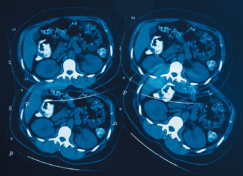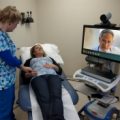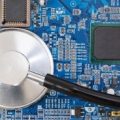
This post was written by Denali Johnson, a previous member of our team.
As a typical member of the millennial generation, I hardly go anywhere without my phone and have an app for just about everything. I'm called on by my family and friends to help them get their new gadgets working, and around the office at CCMU, I'm jokingly referred to as the "IT Department." I'm fascinated by new technology, especially in the medical field.
Technology in today’s medical field is incredible. Forty-five years ago, Dr. Christiaan Barnard performed the first human heart transplant, and since then inventors have created “skin guns” that help burn victims, inhalers with GPS for asthma patients, smartphone apps that take your blood pressure, and a possible cancer vaccination. The list is endless! Brilliant minds are working hard to leverage technology to improve health.
But does more medical technology mean better health? According to the National Center for Health Statistics, the rates of Americans getting MRIs and CT scans tripled between 1996 and 2006. Despite the increasing number of these tests, mortality rates of maladies that they diagnose, such as cancer, have not seen a corresponding drop. In fact, the rate of people that die from cancer each year has only dropped 5% since 1950. Furthermore, research has shown that too many imaging tests can actually lead to cancer in some patients as a result of the high doses of radiation. Other research shows that some of our other high-tech testing equipment over-diagnose patients which then leads to overtreatment—unnecessary surgery, chemotherapy, or other invasive procedures. Not to mention that with the high cost of many of these tests, they may be out of reach to Colorado’s uninsured or underinsured anyway.
Other technological innovations, while more affordable and accessible, bring their own set of consequences. Phone apps and accessories, such as the iPhone attachment that can measure glucose levels, and e-health opportunities like doctor-patient Skype sessions and online access to medical records, are low-cost ways for patients to get more engaged in their own health. On the other hand, it can interfere with the provider relationships that have been shown to produce better health outcomes. It is important that we find ways to use new technologies and tools to enhance our interactions with our health care providers—not replace them.
Undoubtedly, the remarkable advances in technology we’ve seen over the last century have saved countless lives and improved health and health care. As with most things though, finding the right balance is critical. In these exciting times of technological innovation, we must ensure we are using the right technology at the right time, but still preserve the human connections that are the foundation of our health care system.




